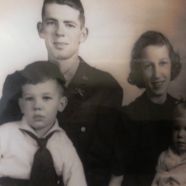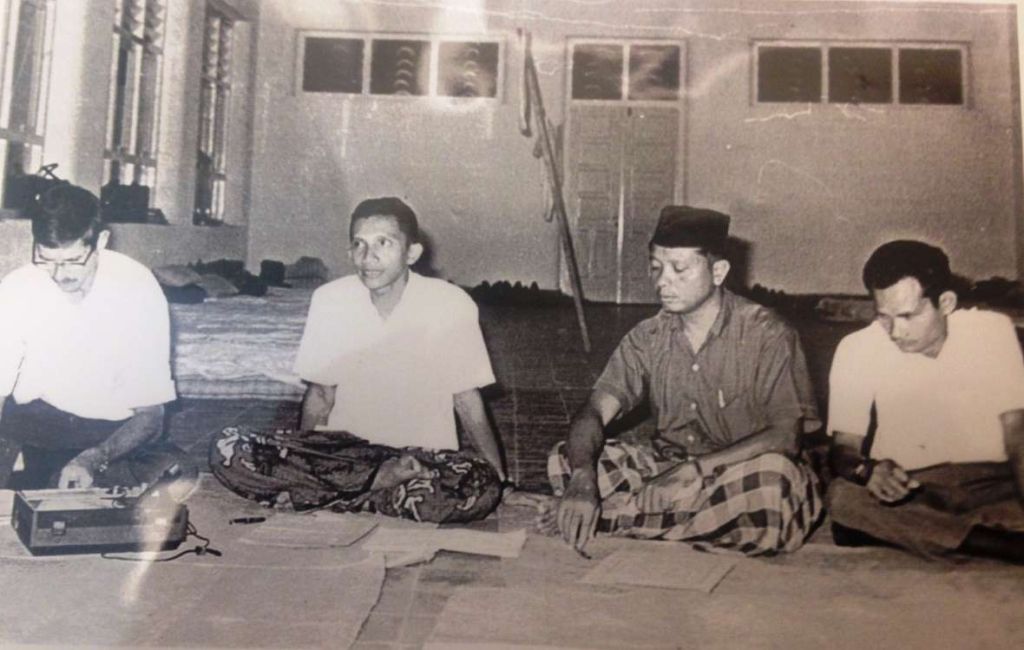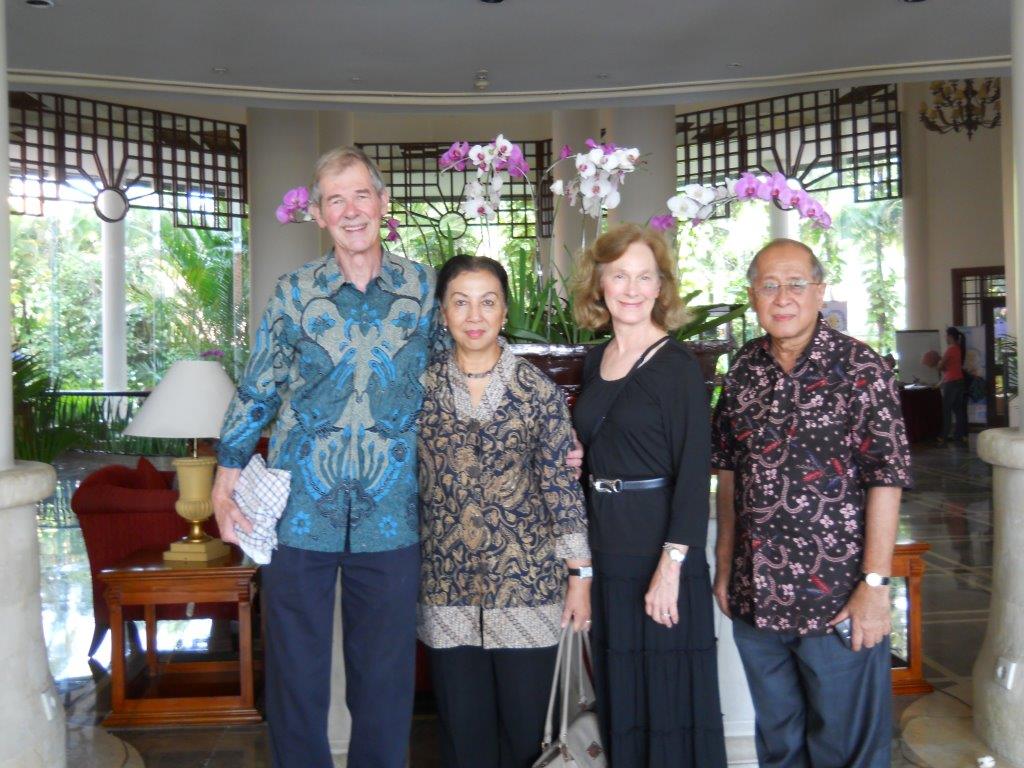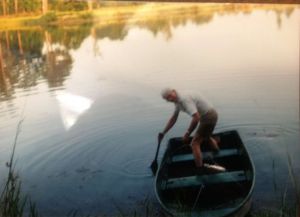
James Peacock Jr. and III, Sara Claire Peacock and Claire Rogers Peacock, before D-Day, ca. 1944
Share This
Print This
Email This
Why Do Museums Make Me Sad?
James Boon poses this question in his book Verging on Extra-Vagance (Princeton University Press, 1999). The answer is, in part, that the experiences denoted by the objects on exhibit are dead and gone. What is left are memories. Those depend on symbols, like the museum objects, that help us remember. Symbols, I suppose, make us sad, too, because they tell us something is gone even if remembered.
Boon himself evokes a flood of memories for me. He was my first student, I his first teacher of anthropology when he studied, as a sophomore, and I taught at Princeton University in 1965. He and others, including Amelie Ochsenberg Rorty, Florence Peacock, and students such as Mr. Bruce Richman (we called them “Mr.” then, like Mr. Boon) were in classes I taught in Spring 1966, including one on symbols. This was part of a once-trendy now defunct label I coined then, “symbolic anthropology.” David Crabb and I started a series termed “Symbolic Anthropology,” published by the University of Chicago Press. The first book was my study of “proletarian theatre” in Indonesia. Talk about dead and gone: as many as a million of the “proletariat,” alleged members of the PKI (the Indonesian Communist party—among whom was my best friend, Sanyoto Soewito, poet and director of a drama troupe) were killed by the Indonesian army in 1965. This was during the Year of Living Dangerously.
On the eve of that year, my wife, Florence Peacock, and I lived in Surabaya, Java, first in a slum, then with the Soejoenoes family. Florence was bitten by a mad dog, and Mrs. Soejoenoes managed miraculously in that terrible period to obtain horse serum for her. But the morning that Gunung Agung (Huge Mountain Volcano) erupted, Florence was paralyzed from the waist down. Machfoed, a homeless pedicab driver who slept next door, helped us get her to a doctor in pitch black volcanic dust, and with a reduced dosage she survived. Mrs. Soejoenoes recently died at 101 years old. Her grandson’s wife (wife of the son of her son Ariawan) visits us in a few weeks.
In 1988, our daughter Louly and I visited the Soejoenoes family. She and Giat, grandson, went to a disco. They drove back late, as Mother Soejoenoes was awake praying on Adna day. They cut off the motor and silently pushed the family car into the compound. Louly was approximately the age her mother had been when we had lived there in 1962–3; old friends welcomed her as though she were her mother, whom they remembered from two decades earlier.
More recently, in 2010, Muhammadiyah, an Indonesian Muslim organization with thirty million members, held a congress commemorating its hundredth year. Forty years before, I had participated in Muhammadiyah training camps together with Sudibjo Markus and Amien Rais. Sudibjo and I reunited at the congress, as I did also with Amien’s brother Dahlan. Then, coincidentally, a neighbor of mine in Chapel Hill finds herself collaborating with Sudibjo in work on children’s health. Amien, once a student leader in the Muhammadiyah camp, recently was a candidate for president of the Republic of Indonesia.
Being sad about time passing is tempered perhaps when time is also cyclical, so the past returns.
But do we want the past to return? Remember and even celebrate Pickett’s charge, at Gettysburg, as many did recently, recalling that horror that Faulkner described as seared into the memory of every Southern “boy.” John Allen Cates rejoined to my mention of Pickett’s charge: Worse was your father’s invasion of Normandy on D-Day. My father was an engineer who never told stories; he was, matter of fact, like his mother, Minerva, and his cousin Jimmy Carter, another engineer. On the fiftieth anniversary of D-Day he opened a footlocker in the attic and showed my sister and me a small diary. In it, he tersely described D-Day for him. Basically, he said, I got off the boat, I got on the beach, I got shot, I got back on the boat. What did he remember? In his nineties, still physically strong but losing his memory, he tried to tell a little, but he had forgotten much, it seems. A few years before, however, we drove with him to Dover (he never returned to Normandy). He had a photographic memory for space and directions, and he showed us each lane and turn from fifty years before. He told it like drawing a map, not telling a story.
In his life, he was like many of us, and perhaps not typically “Southern,” though he grew up in Georgia. He focused on creating things and getting jobs done. He was an electrical contractor, from whom I learned a little starting at age thirteen when I went to work for him. His memories gave way to construction. Maybe museums made him sad, maybe he regretted the destruction of the house on 1520 Fourth Avenue in Columbus where he grew up and we visited as children. Maybe that was a reason he started making furniture at age seventy-five. He gave a piece to each of his children and grandchildren before he died at nearly ninety-three years old.











Thanks for the article Jim. Whenever I see a group of folks I always think: there walk 1000 dramas!! I hope you’ll share more of your dramas with us. Your friend, clay.
I enjoyed reading this article. Jim (Jimmy to me ) is my first cousin.